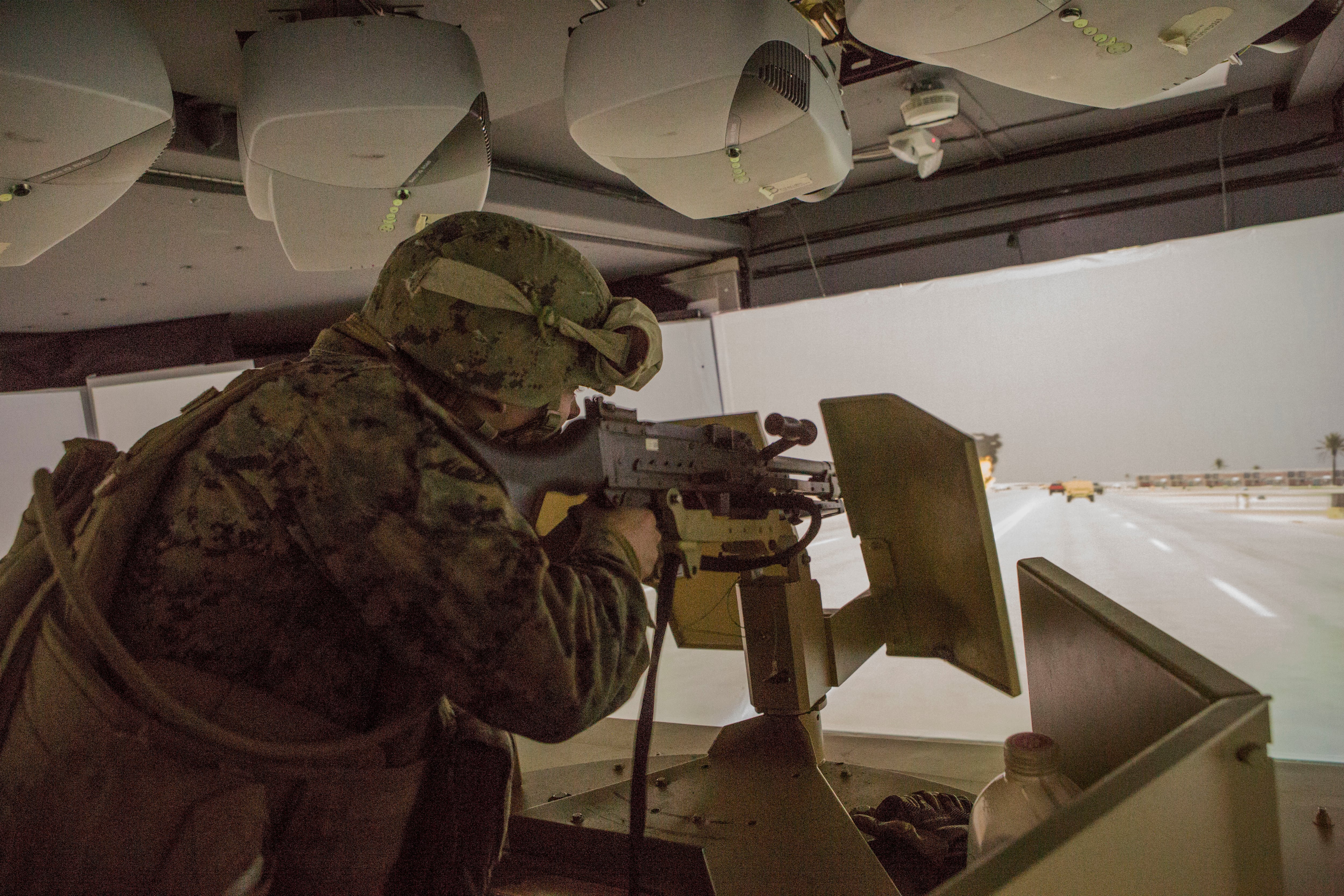MARINE CORPS BASE QUANTICO, Va. ― The Marine Corps broke ground here on what it plans will be a state-of-the-art war gaming center, to direct war fighting experiments and pull feedback from across the fleet to continuously refine how Marines fight.
Lt. Gen. Eric Smith told the audience that the $79 million center will help get resources, whether that’s equipment or new tactics, to Marines in the field quicker.
“It’s a big deal to those 19-year-olds here, to the ones down at Parris Island or at San Diego, because they do the fighting and the dying,” Smith said. “We’re going to make sure they do less of the dying part by what we do here.”
RELATED

The three-star told Marine Corps Times at the event that the combination of expert analysis and advanced modeling and simulation in one place all operating at a classified level provides a more accurate starting point.
“It’s like we’re bracketing,” Smith said. “We’re not saying, ‘How far is the target?’ We’re saying that the target is somewhere between 4,000 and 4,500 yards … that’s what this center does.
Bracketing is a technique often used with indirect fires such as mortars or cannon artillery when determining the distance of a target. A shooter will fire the projectile both short of and past the target, then know the distance where the target lies ― between the two shots.
The Marine Corps Wargaming and Analysis Center is planned to open in summer 2023. The site is next to the Marine Corps University where mid-career and senior office and enlisted Marines attend.
That proximity means that planners can bring in Marines who are coming from the fleet to participate in planning or experiments and to provide feedback.
The center gives planners a way to run through everything from equipment strengths and weaknesses to entire campaign plans using existing capabilities and tactics or mid- to long-term anticipating capabilities.
“An adversary has ‘X’ and I want to defeat that,” Smith said. “Let’s try this. We can do that through an artificial intelligence algorithm, with the right people here we can do that hundreds of times a minute and generate countless outcomes.”
The work could be as simple as pitting one weapon system against another, such as whether this particular fighter jet would prevail against a similar enemy jet, given the available data.
The center will directly coordinate with commanding generals at major bases such as Camp Lejeune, North Carolina; Camp Pendleton, California; Okinawa, Japan; and Marine Corps Air Ground Combat Center, Twentynine Palms, California.
For example, the head of the Marine Corps Warfighting Lab, which will call the center home, can run through experimental models and then reach out to the units to run new methods in a field environment.
Marine Corps Warfighting Lab’s commander or other planners could have them run the experiment with a particular size unit at a certain range. Then, while the simulation may have worked, the on-the-ground Marines might discover details that weren’t considered or came up in the process.
That then feeds back into the next iteration.
Brig. Gen. Benjamin Watson, Marine Corps Warfighting Lab commander, told Marine Corps Times in an email statement that as the Corps works on concept development, experiments and exercises in the fleet both the positive and negative feedback will be sent to the wargaming center.
“Young Marines will see the benefit of expanded channels for feedback,” Watson said. “In the end, this will allow the Marine Corps to iteratively learn and continuously improve our organizational and capability investment decisions, ensuring that our plans and investments don’t just look good on paper, but are underpinned by rigorous wargaming and analysis.”
Brig. Gen. A.J. Pasagian, head of Marine Corps Systems Command, told Marine Corps Times at the event that the same is true of equipment.
“(The center) will really inform us on how we train on a large-scale exercise,” Pasagian said.
When the center was first announced by former Commandant Gen. Robert Neller in 2017, the top general painted a vivid picture of what the center could provide.
“What I’m looking for is a simulation where a battalion or squadron commander or a regimental or a group commander or a division, wing or MEF [Marine Expeditionary Force] or a corps commander can go in and not have to put thousands of people on the battlespace and in the air and actually get them to do a repetition,” Neller said in 2017.
As plans proceeded and funding was sourced, the Marines sought tools for the building, asking industry for pitches on an IBM Watson-like machine or software in late 2018 that would help conduct complex wargaming that the center plans to execute.
The data such a system would provide and the variety of scenarios possible could then give Marine planners numbers that would help learn probabilities of victory, casualty expectations and logistics required for an individual mission or operation.
Todd South has written about crime, courts, government and the military for multiple publications since 2004 and was named a 2014 Pulitzer finalist for a co-written project on witness intimidation. Todd is a Marine veteran of the Iraq War.








